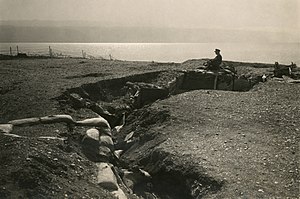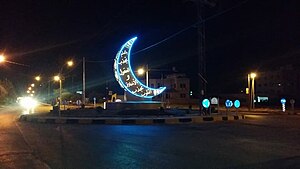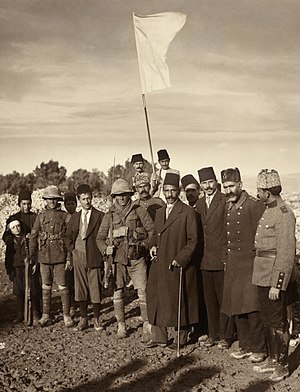User:Musaabdulrashid
Userpage | Talk | contributions | sandbox | second sandbox | edit count
Introduction My name is Mic, I am also Musa Abdur Rashid. I am basically a good person, though I am often at the wrong place at the wrong time. I like explosions and going places, so I hope to graduate from California Maritime Academy in about 2 years with a B.S. in mechanical engineering and a 3rd Assistant Engineer's license from the United States Coast Guard. I have played the bagpipes competitively in Grade 3.
ImportantMusaabdulrashid's notable wikipedia moments:
Recommended Pages
Islam PictureUsageThe layout design for these subpages is at Portal:Islam/Selected picture/Layout.
Selected pictures listPortal:Islam/Selected picture/1  The Sixty Dome Mosque is a medieval mosque located in Bagerhat, Bangladesh, built by Muslim saint Khan Jahan Ali in mid 15th century. This unique masonry mosque with 81 domes (including 4 corner domes) is a UNESCO world heritage site. Portal:Islam/Selected picture/2  Chechen separatist fighter praying during the First Chechen War Portal:Islam/Selected picture/3  Tanzanians protesting the 2008-2009 Gaza bombardment Portal:Islam/Selected picture/4  Sultan al-Atrash, (1891-1982) was a prominent Arab Druze leader, Syrian nationalist and Commander General of the Great Syrian Revolution (1925-1927). Portal:Islam/Selected picture/5  Malcolm X (born Malcolm Little; May 19, 1925 – February 21, 1965), also known as El-Hajj Malik El-Shabazz, was an African American Muslim minister, public speaker, and human rights activist. Portal:Islam/Selected picture/6  Saddam Hussein Abd al-Majid al-Tikriti (April 28, 1937 – December 30, 2006) was the President of Iraq from July 16, 1979 until April 9, 2003. Portal:Islam/Selected picture/7  An early colour photograph of the Emir of Bukhara, Mohammed Alim Khan, in 1911, taken by Sergei Mikhailovich Prokudin-Gorskii as part of his work to document the Russian Empire from 1909 to 1915. Alim Khan, a direct descendant of Genghis Khan, was the last emir of the Manghit dynasty. He reigned from 1911 to 1920, fleeing to Afghanistan when the Bolsheviks annexed Bukhara and proclaimed the Bukharan People's Republic. Portal:Islam/Selected picture/8  The Tughra (طغراء) of Mahmud II. A tughra is a Turkish paisley-like calligraphic seal or signature used at the beginning of sultans' decrees. These colorful emblems incorporated the ruler's name and title in intricate vegetal inscriptions designed by neshanis, or court calligraphers. Parallel to the European signet, tughras often appeared on coins and stamps of the Ottoman Empire. Portal:Islam/Selected picture/9  A young woman from Ramallah, c. 1898-1914. Until the 1940s, women of Palestine wore elaborate handcrafted garments. The creation and maintenance of these items played a significant role in their lives. A knowledgeable observer could determine a woman's village of origin and social status from her clothing. The circular band near this woman's forehead is a ring of coins made from a portion of her dowry money, and indicates that she is unmarried. Portal:Islam/Selected picture/10  Example of an ijazah, or diploma of competency in Arabic calligraphy Portal:Islam/Selected picture/11  1905 Stereoscope. Original caption reads: The native mode of grinding coffee, Palestine. Portal:Islam/Selected picture/12  Turkish trenches on the shores of the Dead Sea, part of the Sinai and Palestine Campaign during the Middle Eastern theatre of World War I Portal:Islam/Selected picture/13  A Bedouin woman in Jerusalem, sometime between 1898 and 1914, dressed in Palestinian costume, the traditional clothing worn by Palestinians. Many of the handcrafted garments were richly embroidered and the creation and maintenance of these items played a significant role in the lives of the region's women. Until the 1940s, traditional Palestinian costumes reflected a woman's economic status, whether married or single, and the town or district of origin, and a knowledgeable observer could glean such information from the fabric, colors, cut, and embroidery motifs (or lack thereof) in a given woman's apparel. Portal:Islam/Selected picture/14  Example of celebration of the month of Ramadan Portal:Islam/Selected picture/15  The Faisal Mosque (Urdu: فیصل مسجد) is a mosque located in Islamabad, Pakistan. It is Located on the foothills of Margalla Hills in Islamabad, the mosque features a contemporary design consisting of eight sides of concrete shell and is inspired by a Bedouin tent, and is considered to be the city's main Landmark. NominationsFeel free to add related featured pictures to the above list. Other pictures may be nominated here. The Faisal Mosque (Urdu: فیصل مسجد) is a mosque located in Islamabad, Pakistan. Located on the foothills of Margalla Hills in Islamabad, the mosque features a contemporary design consisting of eight sides of concrete shell and is inspired by a Bedouin tent, and is considered to be the city's Landmark. The Sixty Dome Mosque is a medieval mosque located in Bagerhat, Bangladesh, built by Muslim saint Khan Jahan Ali in mid 15th century. This unique masonry mosque with 81 domes (including 4 corner domes) is a UNESCO world heritage site. Palestine PictureUsageThe layout design for these subpages is at Portal:Palestine/Selected picture/Layout.
Selected pictures listPortal:Palestine/Selected picture/1  The Mayor of Jerusalem Hussein al-Husayni (centre) meets with soldiers of the British Egyptian Expeditionary Force on December 9, 1917, under the white flag of surrender. The Battle of Jerusalem had begun the day before, but the Turkish forces in the city were no match against the British forces. A Turkish counterattack on December 25 was also repulsed, confirming the capture of Jerusalem by the Allies. Portal:Palestine/Selected picture/2  Ottoman machine gun corps, before the Second Battle of Gaza, which took place on 19 April 1917. The First Battle of Gaza, just three weeks prior, had ended in defeat for the British Empire, and this second attempt to break through Turkish defenses was also unsuccessful. Six months later, on the third attempt, the Allied forces were finally able to break the Gaza–Beersheba line. Portal:Palestine/Selected picture/3  The Jerusalem Railway Station c. 1900. The locomotive on the turntable is "Ramleh" (J&J No. 3), a Baldwin 2-6-0. The station was the terminus of the Jaffa–Jerusalem railway until its closure in 1998. Today, the station is abandoned and suffering from neglect and vandalism, although it is one of 110 buildings selected for preservation in Jerusalem. Portal:Palestine/Selected picture/4  A view of Jerusalem in the early 20th century. The earliest verified reference to the city is in the Amarna letters, which date to the 14th century BCE. Over its long history, it has been controlled by Israelites, Judaeans, Babylonians, Persians, Greeks, Hasmoneans, Romans, Byzantines, Arabs, Mamluks, Turks, and the British before being split between Israel and Jordan. Israel captured East Jerusalem in the Six-Day War of 1967, and the city remains a core issue in the Israeli–Palestinian conflict. Portal:Palestine/Selected picture/5  Tanzanians protesting the 2008-2009 Gaza bombardment. Portal:Palestine/Selected picture/6  A Bedouin woman in Jerusalem, sometime between 1898 and 1914, dressed in Palestinian costume, the traditional clothing worn by Palestinians. Many of the handcrafted garments were richly embroidered and the creation and maintenance of these items played a significant role in the lives of the region's women. Until the 1940s, traditional Palestinian costumes reflected a woman's economic status, whether married or single, and the town or district of origin, and a knowledgeable observer could glean such information from the fabric, colors, cut, and embroidery motifs (or lack thereof) in a given woman's apparel. Portal:Palestine/Selected picture/7  The Ottoman camel corps at Beersheba before the First Suez Offensive of World War I. Although the main thrust of the offensive on February 3, 1915, was unsuccessful in capturing the Suez Canal, the Ottoman army achieved its objective because the British were forced to keep more troops in Egypt than they had expected. Portal:Palestine/Selected picture/8  A young woman from Ramallah, c. 1898-1914. Until the 1940s, women of Palestine wore elaborate handcrafted garments. The creation and maintenance of these items played a significant role in their lives. A knowledgeable observer could determine a woman's village of origin and social status from her clothing. The circular band near this woman's forehead is a ring of coins made from a portion of her dowry money, and indicates that she is unmarried. Portal:Palestine/Selected picture/9  Beit Sahour (lit. Place of the Night Watch) is a Palestinian town east of Bethlehem under the administration of the Palestinian National Authority. The population of 12,367, is Christian and Muslim. Portal:Palestine/Selected picture/10  The Dome of the Rock is an Islamic shrine and a major landmark located in Jerusalem. Portal:Palestine/Selected picture/11  An 1890 map of Palestine as described by medieval Arab geographers, with Jund Filastin administrative area. Portal:Palestine/Selected picture/12  Nablus, the second largest city in the West Bank after East Jerusalem. NominationsFeel free to add related featured pictures to the above list. Other pictures may be nominated here. File:Palestine under the Persians Smith 1915.jpg The West Bank under Persian rule
POTD
|
||||||||||||||||||||||||||||||























